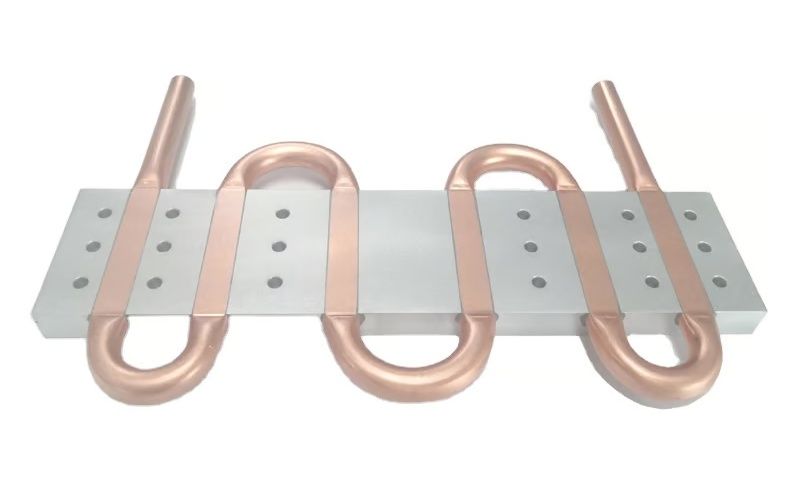cold plate cooling: The Ultimate Guide
What is Cold Plate Cooling?
Cold plate cooling is a liquid cooling technique used in electronic devices and applications that require precise temperature control. It involves a cold plate that is in direct contact with the heat-generating component. The cold plate is made of a material that has high thermal conductivity such as copper or aluminum. The heat generated by the component is then dissipated into the cold plate and transferred to a cooling fluid that circulates through the plate, thus keeping the component at a constant temperature.
How Does Cold Plate Cooling Work?
Cold plate cooling relies on the principle of thermodynamics where heat is transferred from a hot source to a cold sink. In this case, the heat generated by the component is transferred to the cold plate through direct contact. The cold plate is designed to have a large surface area to maximize the heat transfer rate. The cooling fluid circulating through the cold plate absorbs the heat and carries it away from the cold plate to a heat exchanger where it is dissipated into the environment.
Types of Cold Plate Cooling
There are two types of cold plate cooling: single-phase and two-phase cooling. Single-phase cooling uses a liquid coolant that is in a liquid state. The cooling fluid absorbs heat from the component and carries it away through the cold plate to the heat exchanger. Two-phase cooling, on the other hand, uses a coolant that changes from a liquid to a vapor state as it absorbs heat from the component. The vapor is then transported to a condenser where it releases the heat and turns back into a liquid state.
Advantages of Cold Plate Cooling
Cold plate cooling has several advantages over other cooling techniques:
- Offers precise temperature control: Cold plate cooling can maintain a constant temperature for the component being cooled.
- Low noise: Cold plate cooling is a low noise solution compared to fans and other cooling methods.
- High reliability: Cold plate cooling has no moving parts, which minimizes the risk of mechanical failure.
- Low maintenance: Cold plate cooling requires minimal maintenance compared to other cooling methods.
- High thermal performance: Cold plate cooling has excellent heat transfer capabilities due to the direct contact between the cold plate and the component being cooled.
Applications of Cold Plate Cooling
Cold plate cooling is used in a wide range of electronic devices and applications that require precise temperature control:
- Power electronics: Cold plate cooling is used to cool power electronics such as inverters, rectifiers, and converters.
- LED lighting: Cold plate cooling is used to cool high-power LED lights.
- Industrial automation: Cold plate cooling is used to cool electronic components in industrial automation.
- Medical devices: Cold plate cooling is used to cool medical devices such as MRI machines and X-ray machines.
- Aerospace: Cold plate cooling is used in aerospace applications to cool avionics equipment.
Cold Plate Cooling vs. Other Cooling Techniques
Cold plate cooling has several advantages over other cooling techniques such as air cooling and liquid immersion cooling. Air cooling is a low-cost solution but provides inadequate temperature control and has high noise levels. Liquid immersion cooling offers high thermal performance but is expensive and has a high risk of leakage. Cold plate cooling offers the best of both worlds: excellent thermal performance and precise temperature control at an affordable cost.
Design Considerations for Cold Plate Cooling
When designing a cold plate cooling system, several factors must be considered:
- The material of the cold plate: The choice of material affects the thermal conductivity, weight, and cost of the cold plate.
- The choice of cooling fluid: The choice of cooling fluid affects the thermal performance and compatibility with the component being cooled.
- The flow rate of the cooling fluid: The flow rate affects the heat transfer rate and the pressure drop across the cold plate.
- The size and shape of the cold plate: The size and shape affect the surface area and the flow distribution of the cooling fluid.
Cold Plate Cooling Manufacturers
There are several cold plate cooling manufacturers that provide customized solutions for various applications:
- Advanced Cooling Technologies, Inc.
- Thermacore, Inc.
- Laird Thermal Systems
- Aavid Thermalloy, LLC
- Parker Hannifin Corporation
Cold Plate Cooling Cost
The cost of a cold plate cooling system depends on several factors such as the size, material, and complexity of the system. However, cold plate cooling is a cost-effective solution compared to other cooling techniques such as liquid immersion cooling. The low operating noise, high reliability, and low maintenance requirements also contribute to the overall cost-effectiveness of the system.

